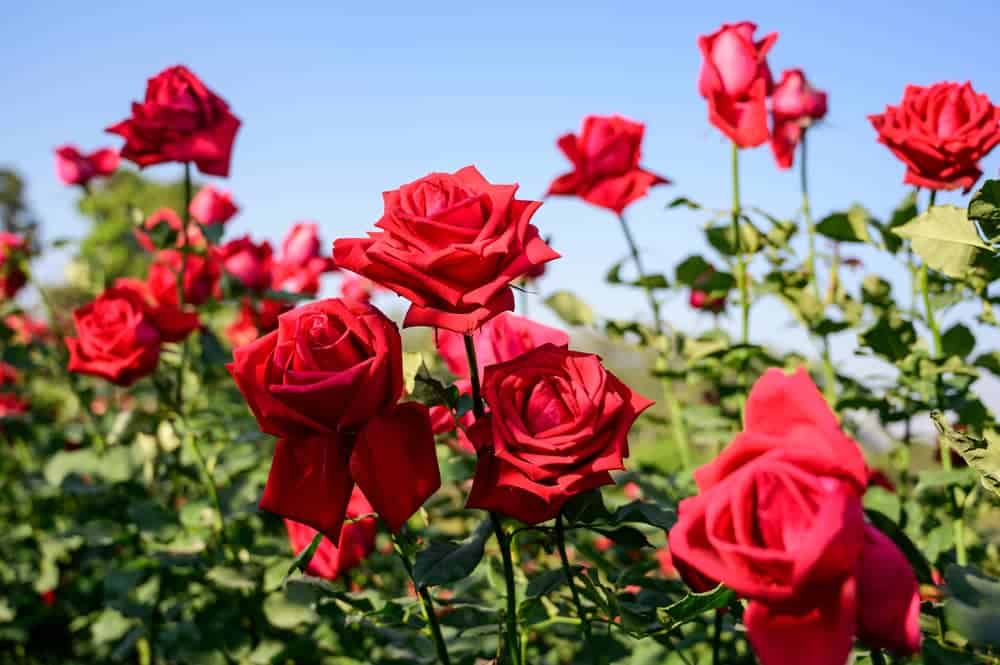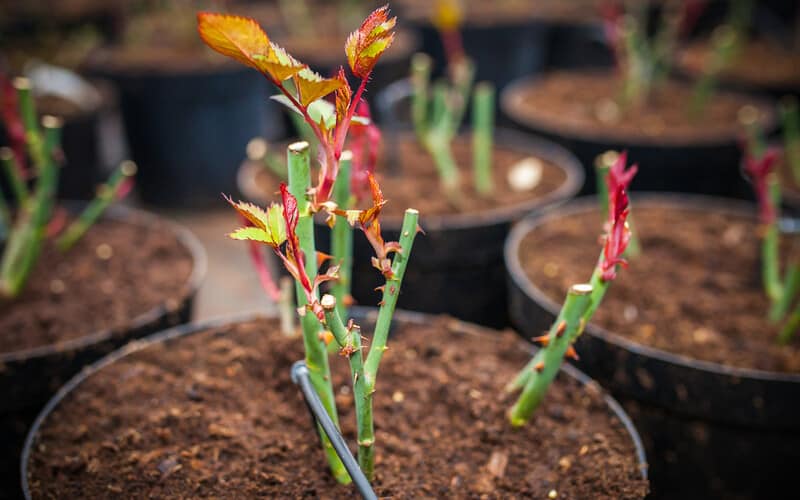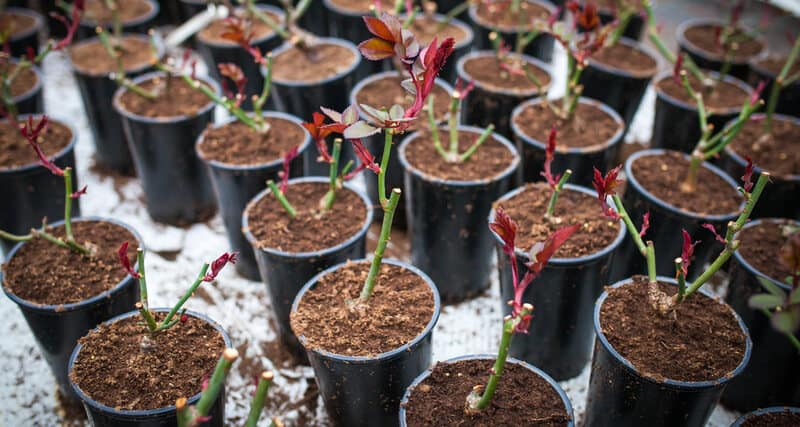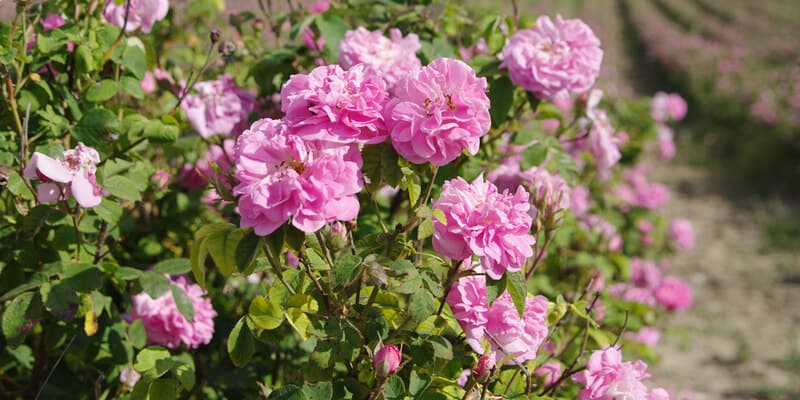Rose bushes are a beautiful addition to any garden. With their stunning petals and delightful scent, roses add an elegant touch of colour to your outdoor space.
If you’ve been thinking about adding some roses to your garden, then it’s time to get started! Here’s everything you need to know about how to grow roses.
Preparation for growing roses
Before you even think about planting a rose bush, there are a few important steps you should take to give your plants the best environment possible.
- Make sure that the location you choose for your roses has plenty of sun throughout the day — at least 6 hours per day.
- The soil must be well-draining and has plenty of organic matter, such as compost or manure, mixed in.
- It’s essential to choose a rose variety that is suitable for the climate you live in. Not all roses can survive cold winters or hot summers, so it’s essential that you research which types will do best in your area.
How to grow roses from seeds
- When growing roses from seed, start by soaking the seeds in warm water overnight. This will help ensure they are hydrated when planting and promote their germination.
- Once they have been soaked, plant roses directly in the soil with some added compost or vermiculite on top. You can also choose to start them in containers or a nursery pot until you are ready to transfer them outside.
- Keep the soil moist until germination has occurred; plastic bags or glass jars placed over the top can help keep moisture.
- Water the plants when you notice that the surface of the soil is dry. Be careful not to overwater, as this can cause root rot.
- Be patient, as germination times will vary depending on many factors, such as weather and seed quality. But expect to wait about one to two months before your seedling sprouts.
How to grow roses from cuttings
With a few simple steps, even novice gardeners can turn a cutting from a rose bush into a newly rooted plant that will produce abundant blooms. You only need a few healthy rose cuttings from a mother plant, some rooting hormone, and patience.
- Find healthy rose stem tips that are actively growing and have not flowered yet.
- Cut these tips approximately 20cm long.
- Snip the stem of each cutting, so it has at least five leaves and two nodes exposed (the point on the stem from which leaves or shoots emerge).
- Submerge the cuttings overnight in lukewarm water, keeping each one separate to avoid tangling.
- Fill plastic pots with sandy potting mix.
- Dip each rose cutting into the rooting hormone.
- Plant the rose stems in individual containers around 5cm deep.
- Add enough water to make it damp, but not soggy.
- Provide enough light without burning the young plants.
- Move your pots outside in a sheltered spot after a couple of weeks of indoor rooting.
If all goes well, you may only need between 6-12 weeks until you’re admiring gorgeous healthy blooms.
How to grow roses from cuttings without rooting hormone
You don’t need special rooting hormones or additives to grow the most beautiful rose bushes. The secret is to start with sharp, healthy cuttings.
- Begin by selecting rose cuttings that are healthy and free from disease or pests.
- Cut 20cm pieces below the bud union.
- Dip the rose cutting in honey. This works as an antioxidant and antibacterial agent.
- Plant the rose cutting in a medium that keeps some moisture, such as potting soil mixed with organic matter.
- Place the plant in direct sunlight with indirect shade to avoid dehydration.
- Carefully water daily to keep the soil moist but not wet.
With proper care and attention, you can grow a striking rose garden without using any rooting hormone.
How to grow bare-root roses
- Before planting, soak the roots for 20 minutes in some water.
- Dig a planting hole that is twice as wide as the roots. Break up any existing soil and mix in organic compost to promote root development.
- Plant the bare-root roses in the ground, taking care to cover the crown and gently tamp down the soil.
- Water often, as bare-rooted roses require more frequent watering than potted roses — at least 5cm per week — to keep them healthy as they establish their root systems.
- Fertilise your bare-rooted roses every six weeks. Add plenty of nutrients to the soil and mulch to help keep moisture during dry spells.
How to grow roses in pots
To grow roses in pots, make sure you use a large enough container (or multiple smaller containers) that holds at least 20 litres of soil. You should also use a potting mix specifically designed for growing roses — a custom blend of equal parts compost, perlite, and soil should do the trick.
Before planting roses, enrich the soil with a slow-release granular fertiliser. After planting, place your potted rose where it can get plenty of light and protection from the wind. Make sure the rose plant is watered regularly and fertilised weekly throughout the growing season.
How to grow climbing roses
To grow climbing roses successfully, start by selecting the right rose variety. Make sure your chosen variety is suitable for your climate and receives proper nutrition and water. If existing structures like fences or arbours are available, it’s easiest to train the climbing roses over them as they grow. Alternatively, use tall stakes or trellises for support, be sure to tie the canes in place as the plant matures.
Last but not least, fertilise your climbing roses with a slow-release nitrogen source like compost tea each spring. Prune your rose plants regularly throughout the growing season to encourage continued growth.
How to care for roses
Roses respond to the tender touch of a skilled caretaker, and the best way to keep them happy is through providing consistent and proper care.
- Roses need a lot of sunlight, so place them in a sunny spot. But put shelter over them as rain and strong winds can be hazardous for these delicate blooms.
- To keep your roses blooming for as long as possible, water the soil regularly and mist the leaves to perk them up. Avoid overhead watering because this can damage the rose flowers.
- Use fertiliser when watering to give roses that extra boost. Growing roses in a garden plot need fertilising every few weeks, whereas potted roses need to be fertilised weekly.
- Roses prefer well-drained soil, so add organic matter or compost to help your roses stay healthy and vibrant.
- Regular pruning and trimming are also important if you want your roses to thrive. Generally, the best time to prune roses is in late winter or early spring. This is because buds will begin to grow in spring, and you don’t want to prune too early and miss out on the flowering for that season.
- Check your roses periodically for any signs of disease or pests and take immediate action if needed.
When to fertilise roses
The best time to fertilise your roses is during the flowering season, usually spring and early summer. For the most successful growth, use a balanced fertiliser with nitrogen, phosphorus, and potassium.
Use approximately one teaspoon of slow-release granular fertiliser under each rose bush every six weeks. If you have planted several shrubs together, use double that amount in the same area.
How to make potting mix for roses
While store-bought potting mix might do the trick, you can easily whip up your own blend at home.
- Gather coarse particles of peat moss, vermiculite or perlite and topsoil — these components will create a barrier of air pockets and keep moisture while providing adequate nutrients.
- Add an organic fertiliser or compost that will feed your rose bushes throughout the season.
- Use a hand tiller or spade to blend all the ingredients, and you’ve got a potting mix perfect for cultivating a fantastic rose garden.
When do roses bloom in Australia?
In Australia, roses bloom between September and early May. Depending on where you are in the country, you can enjoy the beauty of these stunning flowers any time from late spring to early winter.
Roses are Red, Violets are Blue, and You Can Grow Roses Too
Every gardener deserves to enjoy the delightful beauty of a rose bush in bloom. With a bit of knowledge of soil preparation, fertiliser usage, and rose pruning techniques, anyone can grow a show-stopping rose bush in no time.





